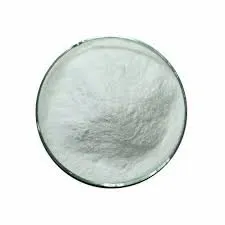
Dec . 10, 2024 11:09 Back to list
Hydroxyethyl Cellulose Applications and Properties for Various Industries and Research
Understanding Hydroxyethyl Cellulose Applications and Significance
Hydroxyethyl cellulose (HEC) is a cellulose derivative that has gained considerable attention due to its versatile properties and extensive application in various industries. Identified by its CAS number 9004-62-0, HEC is a non-ionic, water-soluble polymer primarily derived from natural sources, making it a subject of interest in the realms of environmental sustainability and biocompatibility.
Chemical Structure and Properties
Hydroxyethyl cellulose is produced through the etherification of cellulose, typically derived from wood pulp or cotton. The introduction of hydroxyethyl groups into the cellulose structure enhances its solubility in water, creating a product that can form gels and viscous solutions at relatively low concentrations. Its molecular weight can vary significantly, influencing the viscosity, thickening capabilities, and other rheological properties of the final product.
One of the notable characteristics of HEC is its ability to maintain viscosity over a wide range of temperatures and pH levels. This stability makes it an excellent thickening agent, allowing it to be used in various formulations without compromising efficacy.
Applications Across Industries
1. Pharmaceuticals In the pharmaceutical industry, hydroxyethyl cellulose is often employed as a thickening agent, binder, and film-forming agent in drug formulations. Its biocompatibility and low toxicity make it suitable for use in sustained-release medications, topical ointments, and gels, ensuring that active ingredients are delivered effectively and consistently.
2. Cosmetics and Personal Care
The cosmetic industry utilizes HEC for its thickening and stabilizing properties in products such as lotions, creams, shampoos, and gels. Its ability to provide a pleasant texture and improve the application and spreadability of products makes HEC a preferred choice among formulators. Additionally, its moisturizing properties help enhance the sensory experience of cosmetic products while contributing to skin hydration.
hydroxyethyl cellulose cas no

3. Food Industry
HEC also finds application in the food industry, where it is used as a thickening agent and stabilizer. Its ability to retain moisture and improve the texture of food products makes it valuable in the formulation of sauces, dressings, and dairy products. As a food additive, HEC is recognized for its safety and efficacy, aligning with the growing consumer demand for clean-label products.
4. Construction Industry
In the realm of construction, hydroxyethyl cellulose is utilized in cement and mortar formulations. Its role as a water-retaining agent improves the workability and consistency of construction materials, contributing to enhanced durability and adhesion. This application underscores the versatility of HEC beyond traditional industries.
5. Agriculture
HEC finds its way into agricultural practices as well, where it is used in soil retention products and as a component of various fertilizers and pesticides. Its ability to retain moisture and enhance soil structure makes it beneficial for sustainable agricultural practices, promoting healthier crop growth and reducing water usage.
Conclusion
Hydroxyethyl cellulose, identified by its CAS number 9004-62-0, plays a significant role across a multitude of industries due to its exceptional properties and versatility. Its applications in pharmaceuticals, cosmetics, food, construction, and agriculture showcase its importance in developing efficient and sustainable products. As industries increasingly prioritize environmental responsibility and product safety, HEC continues to be a valuable ingredient that meets these demands, aligning with contemporary trends and consumer expectations.
In a world where the intersection of technology and nature is becoming increasingly critical, hydroxyethyl cellulose exemplifies how natural polymers can be harnessed to create innovative solutions across various sectors. With ongoing research and development, the potential applications for HEC seem limitless, promising a brighter, more sustainable future grounded in the principles of chemistry and biocompatibility.
-
Versatile Hpmc Uses in Different Industries
NewsJun.19,2025
-
Redispersible Powder's Role in Enhancing Durability of Construction Products
NewsJun.19,2025
-
Hydroxyethyl Cellulose Applications Driving Green Industrial Processes
NewsJun.19,2025
-
Exploring Different Redispersible Polymer Powder
NewsJun.19,2025
-
Choosing the Right Mortar Bonding Agent
NewsJun.19,2025
-
Applications and Significance of China Hpmc in Modern Industries
NewsJun.19,2025







